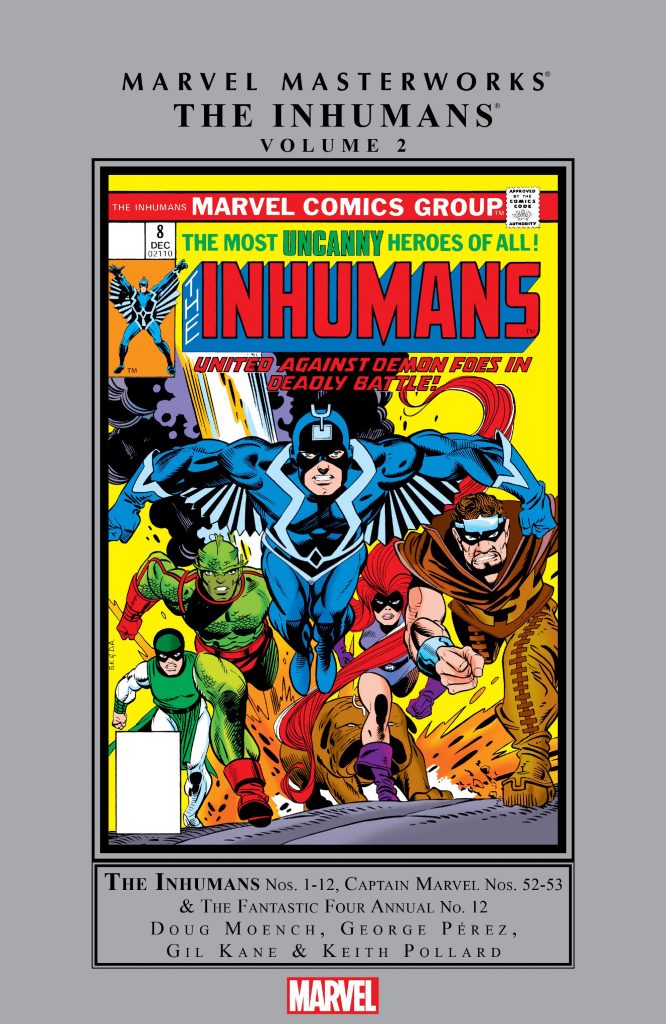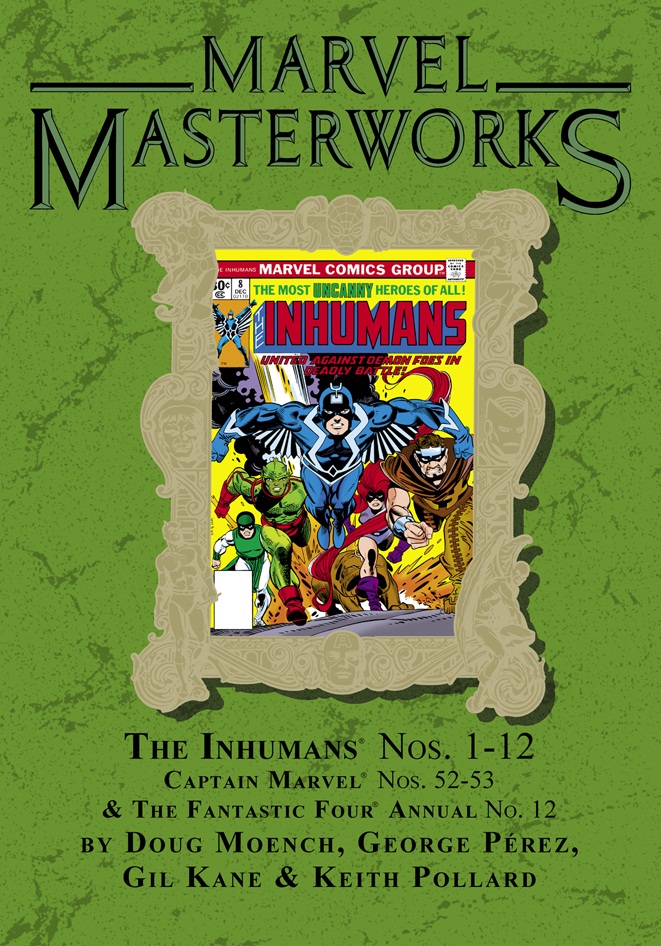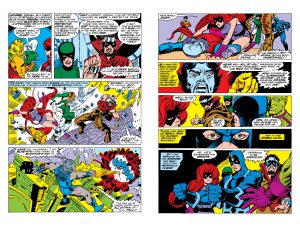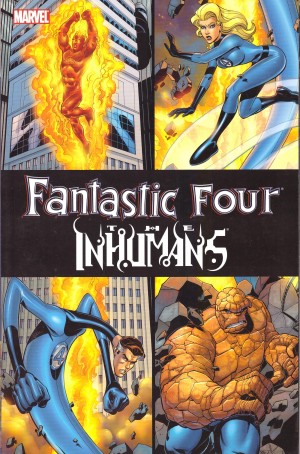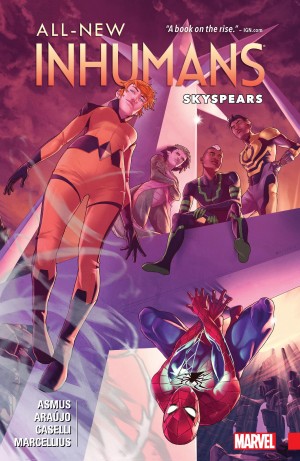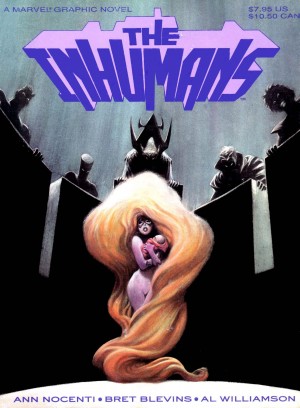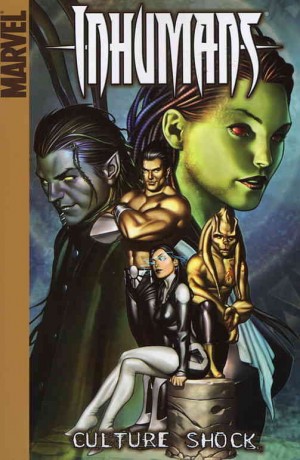Review by Frank Plowright
Doug Moench when motivated could be Marvel’s most intelligent writer in the 1970s, that among impressive company. His intelligence seeps from an introduction discussing Sumerian mythology and its application to the creation of the Inhumans. Unfortunately this erudite man was barely in evidence in 1975 when writing the Inhumans. He dealt in bombast and exposition, captions stating what the artwork shows, and his good ideas are buried in mediocrity. Every emotion is ramped to excess as characters describe what they’re feeling, and after four chapters Moench dives into the standby plot for all pre-1990s Inhumans stories as Maximus once again takes over the city of Attilan.
Moench’s big idea is good. The Kree race, responsible for creating the Inhumans on Earth, want to press gang them into conscripts for a forthcoming war. That never happens, but was well used in the 21st century. Instead the soap opera of the first few chapters is followed by a more imaginative trip into space as the Inhumans seek to settle off Earth.
Style and elegance is applied to the art over the first half of the book. George Pérez, just starting his career, packs in the detail, but has a looser approach than he’d later develop. Gil Kane is professional throughout, but if his layouts don’t always prioritise clarity there are some wonderful looking panels to compensate. Keith Pollard draws the remainder of the Inhumans 1970s solo series, and while his figures are stylised superhero forms, his layouts are clear.
Moench seems to have been influenced by Jack Kirby’s New Gods. There’s a similar broad scope with massive issues at stake, smaller connected episodes being part of one bigger story, and implacable and all-powerful foes targeting Earth. However, potential is lost in melodrama and a lack of concentration on what’s important to the main story. Readers obviously lost patience, and the Inhumans lost their series, leaving matters to be concluded by Scott Edelman and Al Milgrom in Captain Marvel’s comic. If Moench’s dialogue was dramatic and expository, at least it resembled something people might actually say, whereas Edelman’s idea of speech patterns is wretched. A good final twist seals his two part conclusion of what Moench began, but the remainder is mediocre.
The remaining material mops up the rest of the 1970s for the Inhumans not reprinted as parts of other series, back-ups and guest appearances. Marv Wolfman’s opening caption of the Fantastic Four story claiming it “possibly” the most powerful story you’ll ever read is qualifying his hyperbole from the start, but setting himself up also. The best that can be said is that for once Maximus isn’t the villain. Otherwise it’s page filler.
Peter Gillis and Ron Wilson’s work is near the best in the book, explaining how the Inhumans came to settle in the Himalayas. It’s compact and welcome guest stars are logically worked in. Gillis’ follow-up about the hubris of flying Inhumans is thoughtful, but Richard Howell twists the characters into strange poses. Mary Jo Duffy’s closer plays on Inhumans politics and Quicksilver’s abrasive personality, and it’s very nicely drawn by Alan Weiss.
Were George Pérez and Gil Kane not so prolific this could perhaps be recommended on the basis of their art. Weiss certainly isn’t, but do his ten pages justify buying an $80 hardcover? Very little of the content otherwise makes the average mark all these years later, even accounting for changing styles. For rich completists only.
